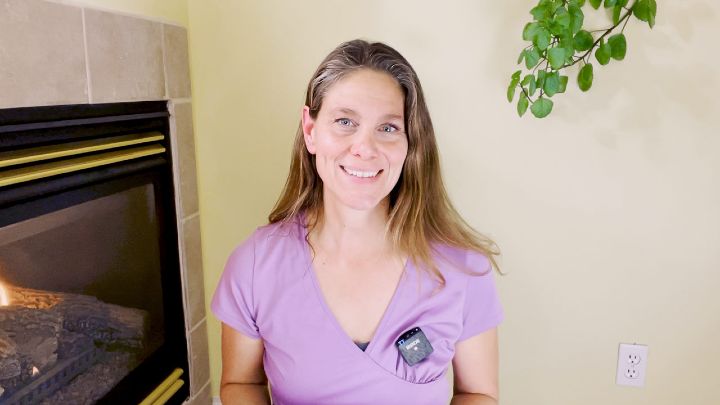
The embodiment solution
Have you ever had a moment when you felt really grounded, connected to your environment, and fully, authentically yourself? Can you think of the last moment when you were immersed in nature and it filled you with buzzing life force and energy? When feelings would surface, even hard ones like sadness, and it felt okay and natural to feel them? Or a moment with a beloved pet or friend that made you feel like time flowed by effortlessly and it was enough to enjoy good company with another warm body? Maybe it was simply a time when you were relaxed and calm and it felt good to be in your own skin.
That’s what it feels like to be embodied.
Layers of disconnect
Why is it a big deal to be embodied? I think I should start the explanation by talking about why it’s less than ideal to be disembodied, although maybe a better word is “disconnected.” We live in a culture that is largely disconnected: from our bodies, from nature, and from other people. You can see how disconnected we have become even from the planet itself by simply looking at the news and seeing the waste problems, the climate crisis, and other environmental problems we’ve created. We are living out of harmony with the natural world. In order to be connected to nature we first need to be connected to our body, as being disconnected from our body naturally leads to being disconnected from our larger environment. Now you might be thinking, “Okay, I’ll simply get grounded back into my body and then reconnect to nature,” but unfortunately it’s just not this simple.
Another symptom of this global disconnect is our placement in unnatural environments. Sitting indoors most days and not moving has led to the atrophy of our bodily tissues, thickening of the fascial gel causing chronic conditions and pain or discomfort. It’s natural to want to move away from discomfort rather than towards it—in fact, our nervous system is wired to do this in order to protect us—so we end up moving even less in an attempt to minimize the pain, or even mentally “checking out” to avoid processing it. In other words, we are programmed to be out of body when pain or discomfort is present.
It’s natural to want to move away from discomfort rather than towards it - in fact, our nervous system is wired to do this in order to protect us - so we end up moving even less in an attempt to minimize the pain, or even mentally “checking out” to avoid processing it.
This whole thing is a vicious cycle of pain, which leads to disembodiment, which leads to disconnection from our environment and the people within it. This in turn leads to feelings of isolation, further compounding our discomfort and disconnect, and we just keep on getting more lonely, disconnected, and disembodied.
Fascia theory
I like to think of the fascia in the body as ground zero for connection because it is literally the connective tissue (it’s also what creates space and makes movement possible, but more on that later). The fascial matrix is like the original “primordial soup” that all aspects of your humanity arose ≠t’s the non-dual tissue of the body, the dimension of our humanity where we get to really experience oneness in a physical felt sense. During the embryonic stage of development we are all fascia, and these fascial tissues folded and turned and individualized into specialized organs, bones, etc. This is why I love working with fascia so much: it’s the fabric in the body that can bring us back home to oneness and our deepest essence.
This past summer I spent many hours in a fascia-focused human dissection lab. I also spent a great deal of time in the mountains on long walks through the deep forest and up high peaks, and I was regularly amazed at how everything in nature fits so perfectly together. It eventually became clear to me that the perfection and fractal intelligence within nature is the same as the intelligence inside our bodies.
My experience in the dissection lab was much the same as my long journeys into nature; it was just a matter of going down and in, rather than going up and out.

Myofascial Yoga for Stress Reduction with Christine Wushke
Watch Christine's short talk to learn more about her new 6 part series:
Myofascial Yoga for Stress reduction.
- Class 1 Myofascial yoga: Release shoulder tension
- Study further with Christine on the Ekhart Academy in her 20 hour accredited course: Fascia and the nervous system
Moving back into balance
Most of us probably understand that we feel better in nature, so what keeps us away? A lack of acclimatization to the elements can create higher than natural levels of discomfort when being outside, particularly in harsh climates like Canada, where I live. Who wants to go outside and immerse themselves in the elements when it’s twenty degrees below zero? The body will recoil at these harsh conditions and reinforce the desire to be inside on such cold days, reinforcing the whole vicious cycle of indoor sedentariness, pain, and isolation. So what is the solution? Let’s turn this cycle back upon itself so you can see how simple it can be.
We first need to become embodied - that is, to return consciousness to the body - but this is a difficult place to start when the body doesn’t feel good. Therefore, we need to train the nervous system to tolerate little bits of discomfort by merging good feelings with not-so-good feelings, to hold the opposites together at the same time. In trauma theory, a person who is greatly comforted by thoughts of angels, for example, might be guided to turn their thoughts to a group of angels to support them before trying to process a traumatic memory, thus blending the good with the not-so-good in a way that keeps them feeling safe.
The goal is to return conscious presence into the body, displacing the mind as its central command. There is this commonly upheld idea, for example, that exercise and movement practices are uncomfortable but good for us, so we should push through and do it anyway. I see this approach as a perfect illustration of the cycle of disconnect: it’s coming from a disembodied perspective by overriding our pain/threat signals.
But as Einstein said, “You can’t solve a problem from the level of mind that created it,” and we can’t solve disembodiment from within a disembodied approach. My solution, then, is to find ways in which movement feels truly enjoyable, as this takes us out of the pain loop and into a whole new cycle of returning to embodiment, connection, and harmony with the world around us.
My solution, then, is to find ways in which movement feels truly enjoyable, as this takes us out of the pain loop and into a whole new cycle of returning to embodiment, connection, and harmony with the world around us.
The new cycle - an exercise on returning to embodiment
Find ways to move that feel good.
Start small, with tiny ranges of movements that stimulate feelings of enjoyment. Notice how this makes you WANT to be in your body. Notice if there are areas of pain, and let your awareness travel around your body looking for pockets of pleasant sensation, rather than the default mode of seeking out painful sensations. If you have widespread pain in your body, you may need to start with something simple like focusing on your right pinky finger or your left elbow, anywhere you can find some space for enjoyment.
Once you’ve found an area that works for you, hold that location in your awareness. Take a fascia ball, (or a balled-up sock… something soft and gentle like a stress ball, not hard like a tennis ball) and place it in the area of your body that feels good already.
Normally we are drawn to place the ball in the area of tension or pain in order to release it, but in this practice we are placing the ball in a positive sensation pocket.
Close your eyes and let your awareness settle.
Start to soften into the sensations where you have placed the ball, and start to move within tiny ranges to see if you can activate tissues all around that “good” zone. Stay with it a little longer and see if you can allow those pleasant sensations to spread outward.
Keep going, and allow the pleasant sensations to move toward the nearby areas of pain, tension, or discomfort. Let the two zones merge and mingle, as if new friends meeting for the first time.
Allow the body to move around intuitively and gently, letting the good places have a larger field of focus than the not-so-good places. Keep letting the good be bigger than the not-good, and move around a bit more.
When you feel like you have successfully seated your consciousness inside your body, open your eyes and look around the room. See if you can find a piece of nature on which to settle your gaze. Maybe your family pet or a tree outside the window.
Let your focus soften, and notice how it feels in your body to put your focus on nature. Can you feel the movement of the tree within your cells? Notice how your overall self feels now from within an embodied perspective connected to nature, and then see if you can expand your awareness even further to be aware of the world around you. How does it feel to rest in nature? To not only be connected to nature but to know oneself as an element of nature itself, not separate or isolated but joined and immersed in the healing power of the planet?
Hopefully this little exercise gave you a taste of the power of connection. If this is a regular practice, over time your body will start to crave this type of movement. Slowly your tissues will wake up, heal, and get stronger, allowing for more freedom of activity and more time outside.
More time outside will begin to acclimatize your body to the elements, getting your system stronger and more able to withstand harsher elements. Returning to our wild and natural selves in this way is one of the greatest gifts we can also offer those around us, those we love. This return within ourselves will then begin the process of a return to healthy community: healthy relationships, and living in harmony with the world around us, connected from the cellular level all the way to the global level.
Related
This article originally appeared on Christine's website and is reproduced with kind permission.
